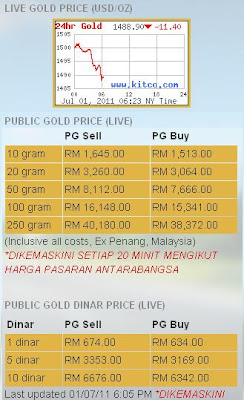A lot of my friends are having kids right now. Over the weekend, we had some friends over for dinner. One of them brought his eight-year-old daughter. She loves animals, and was great with all our dogs and horses, but we ended the night exhausted! Explaining the rules, keeping a watchful eye over the bigger dogs, reminding her to use her inside voice... I'm still tired from the visit. And I can't begin to imagine how much harder it would be with two kids. Especially with the arguments, trying to decide who's right and who needs a time-out. The mainstream financial media is like a couple of eight-year-olds. We hear arguments from both sides -- corporate earnings are beating records, but at the same time joblessness could jump to 10% again. Which is it? And how do you plan an investment strategy against such bipolar predictions? Here at Smart Investing Daily, we believe the U.S. economy is at another tipping point. The recent market rallies are unsustainable, are similar to an extinction burst... You know, when a child is throwing a tantrum and he lets out one last big scream before he falls asleep. But in case I'm wrong, wouldn't it be nice to know of an investment that could make you profits if the market rises or falls? Well, I've got one for you...
Invest in Silver
Silver is an interesting precious metal. It protects against inflation like gold. But silver also has a lot of industrial uses. That makes it like copper, which booms during economic recoveries. One of the toughest aspects of gold is to find out if it's trading more as a currency or a commodity. Is gold demand up because of concerns about the debt crisis? Or is gold up because of jewelry demand in India and China? It's an important question, but one that doesn't apply in the same way to silver. Silver straddles the metals industry. Certainly, gold and platinum have industrial uses, and we like both of these precious metals as investments right now. Consider this, though. About a quarter of all platinum consumption came from recycled platinum. That's not the case with silver, and that could mean increased demand during an economic recovery. In fact, 487.4 million ounces of silver were used for industrial purposes in 2010. That's well over four times the amount of silver used to make coins and medals. That's also a gain of about 20% from 2009. Not bad in a struggling economy. With uses that span electrical circuits, water purification, photography and other industries, industrial silver demand makes up 66% of silver production. But there's another aspect of silver that should get your attention -- silver investments. World investment demand climbed 40% last year to more than 279 million ounces. And get this... Hedge funds and money managers increased their silver positions by 19% last week, according to the U.S. Commodity Futures Trading Commission... the third week of gains. (Don't forget to sign up for Smart Investing Daily and let me and fellow editor Jared Levy simplify the market for you with our easy-to-understand articles.)
How High Could Silver Prices Go?
Bloomberg reports that silver could climb as high as $70 an ounce by next March... a jump of almost 75% from current prices. Let's take a look at a chart to see if this is a realistic forecast.
This is a chart of silver futures for September delivery. See that pop from late April? A huge move... but prices fell short of silver's all-time high of $50.35 an ounce in January 1980. Since January 2011,silver prices have climbed 26%. That's not a bad gain; it beats gold's gain of 12% handily. But that's not near the pace silver would need to climb in order to meet a 75% gain by next March. Is it possible? Yes. Between September 2010 and May 2011, silver prices climbed 140%. But just as quickly, a huge chunk of that gain disappeared when silver prices dropped from $48 back below $35. Realistically, silver prices may test that all-time high by Thanksgiving. At that point, smart investors should ruthlessly protect their gains. That strong resistance silver shows around $50 an ounce will be tough to beat. Expect a drop in prices anywhere above $48. For investors considering an exchange-traded fund like the iShares Silver Trust (SLV:NYSE), look to the price spike in late April to find your resistance point. For investors looking at silver mining companies, be aware that mining costs, like fuel prices, impact profits. Keep an eye on operating margins as companies report earnings. Lower margins could mean lower earnings moving forward.
Publisher's Note: Taipan's Michael Robinson is the best in the business when it comes to playing the silver market. So far this year, he has led American Wealth Underground subscribers to gains of 200%, 68%, 140% and 353%... all thanks to silver and the metals market. Michael recently unveiled his latest special report. There is a strong chance it will lead to his biggest gains yet. To learn what our silver expert has uncovered, follow the link.
Article brought to you by Taipan Publishing Group. Additional valuable content can be syndicated via our News RSS feed. Republish without charge. Required: Author attribution, links back to original content or www.taipanpublishinggroup.com.







